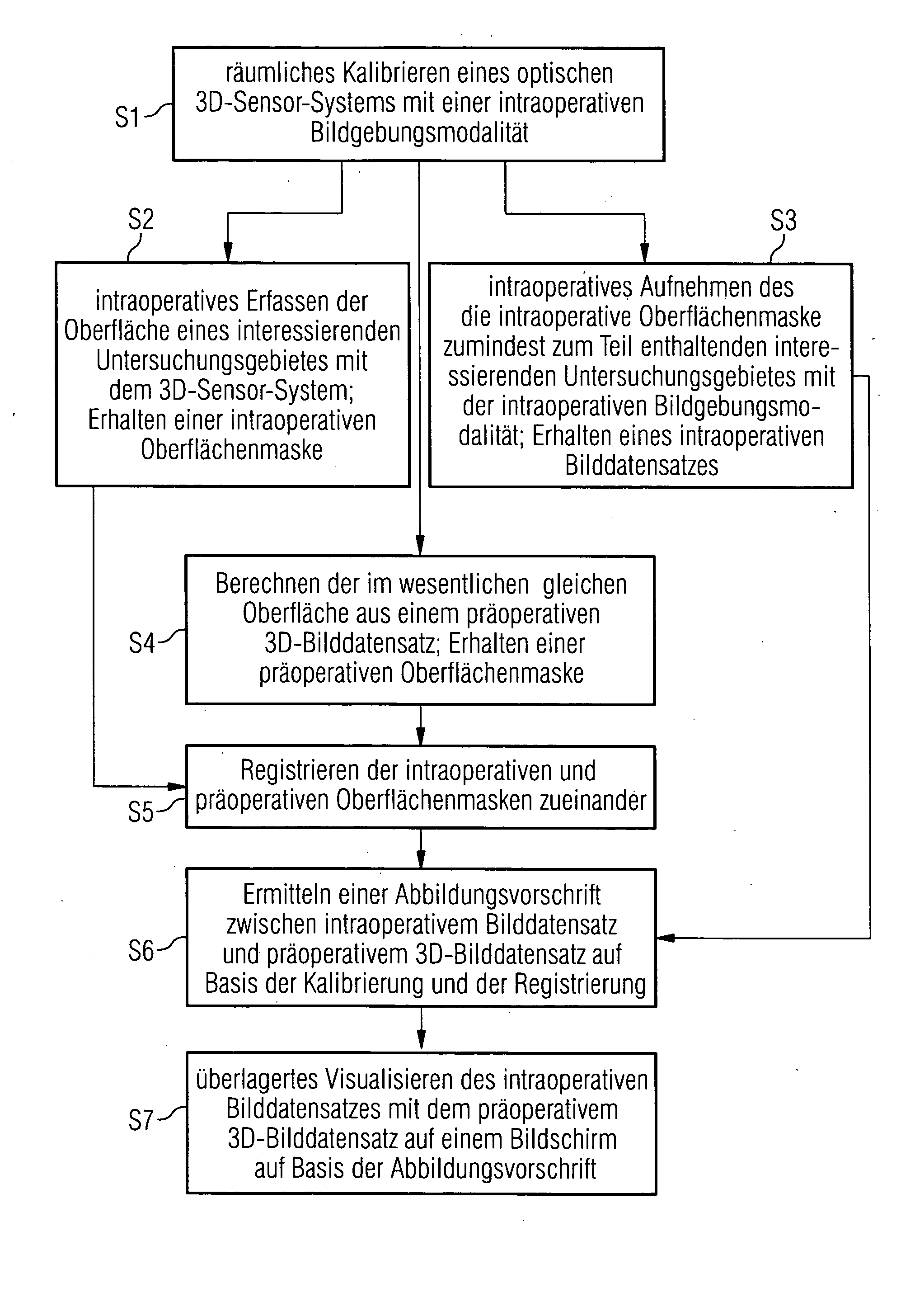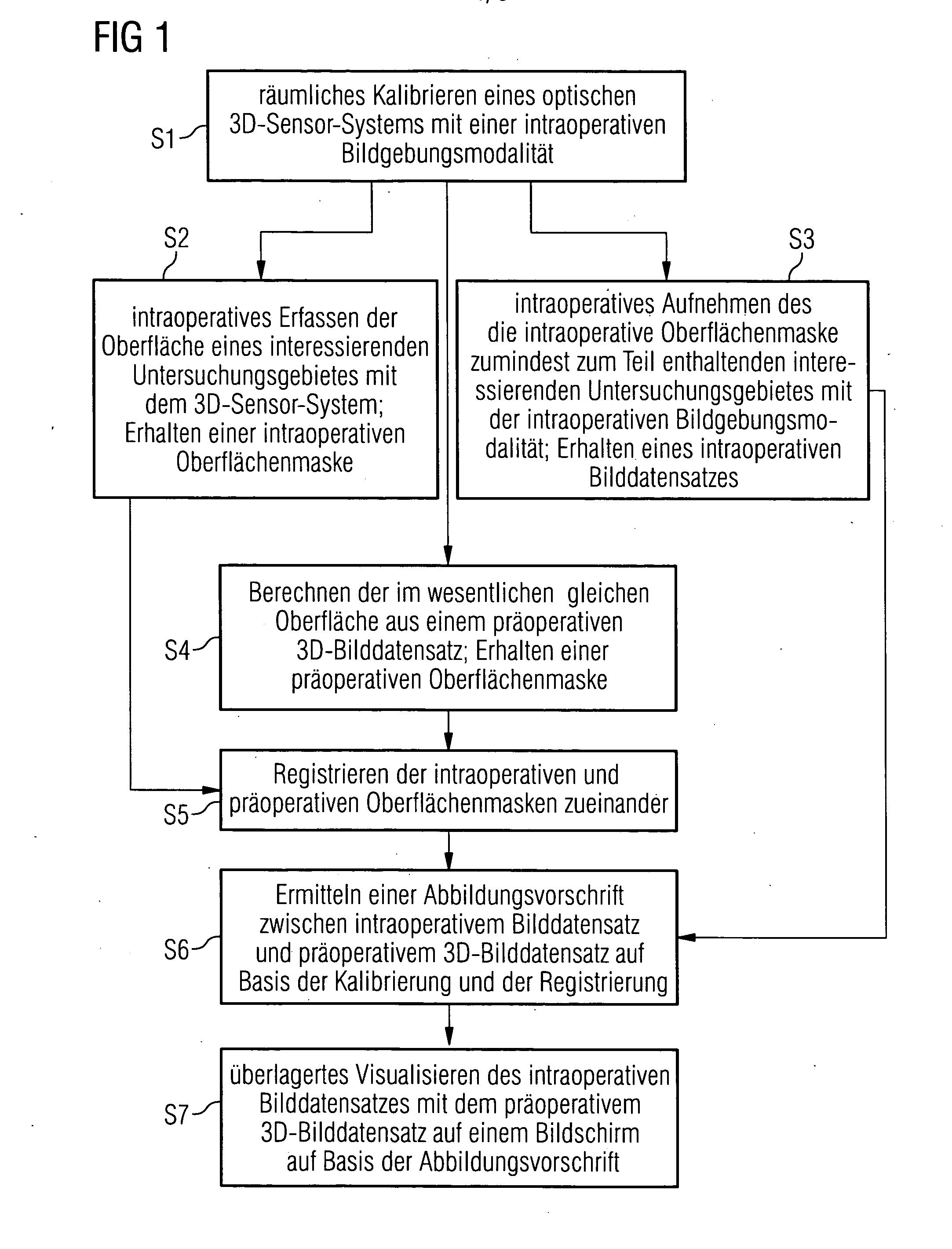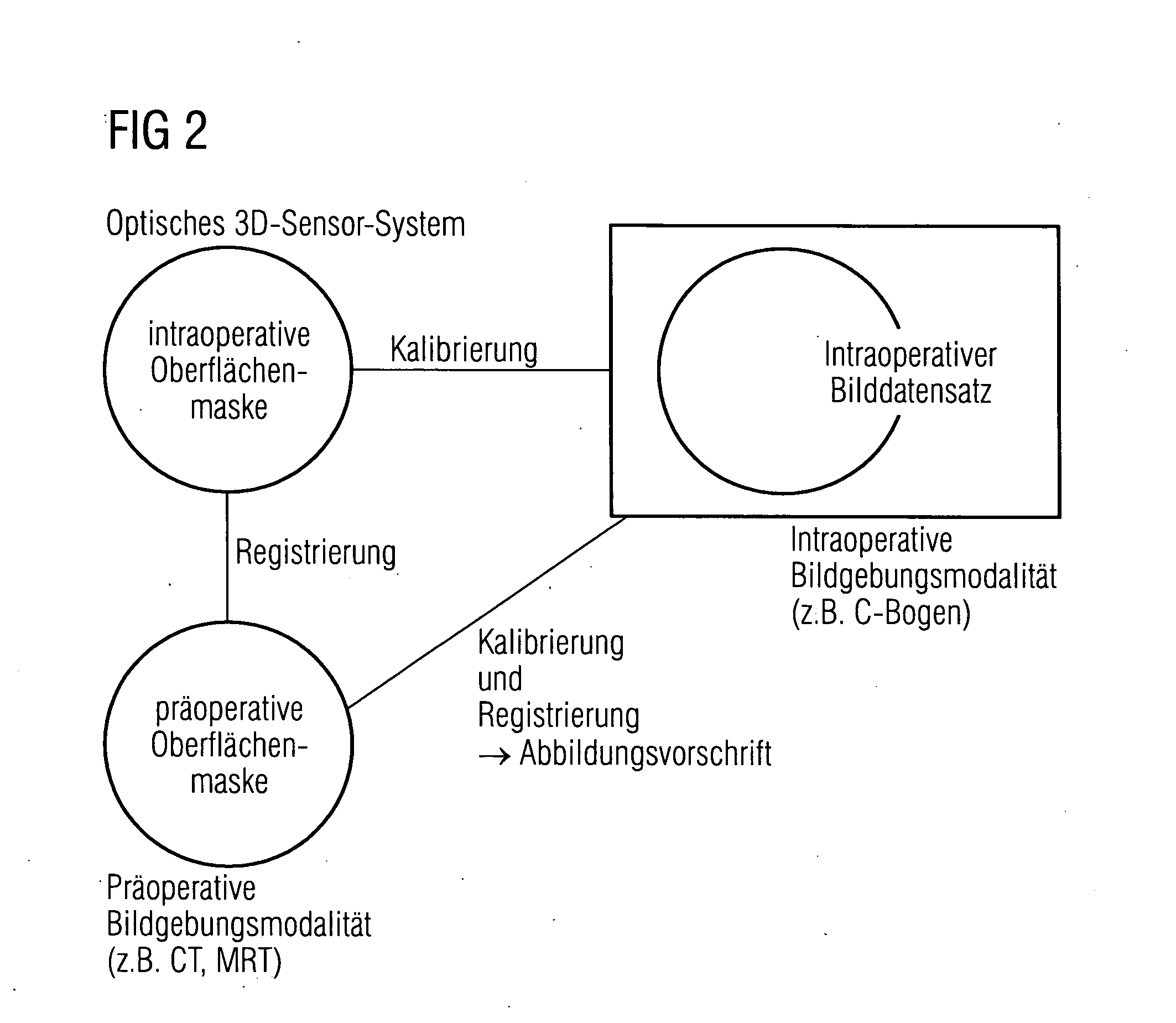Registering intra-operative image data sets with pre-operative 3D image data sets on the basis of optical surface extraction
a technology of optical surface extraction and image data, applied in the field of intraoperative registration of intraoperative image data sets with preoperative 3d image data sets, can solve the problems of difficult to precisely localize a tumor exactly using only, the resolution of this image data is greatly limited, and the cost of providing a modality combination is extremely high, so as to improve the registration of intraoperative fluoroscopic images.
- Summary
- Abstract
- Description
- Claims
- Application Information
AI Technical Summary
Benefits of technology
Problems solved by technology
Method used
Image
Examples
Embodiment Construction
[0030] The present invention describes a method in which optical surface recognition is used to enable the position of the patient to be recorded precisely, rapidly and securely and thus an intra-operative 2D or 3D image data set can be quickly and thereby intra-operatively fused with a pre-operative 3D image data set.
[0031] Optical surface recognition is part of the prior art and is offered commercially.
[0032] The basis of this technology is an optical 3D sensor system which processes specific images of one or more 3D sensors in a suitable manner. These 3D sensors observe an object to be measured from the side. For measurement the surface of the measurement object is illuminated in accordance with a patentable method by means of white light projector with a pattern of stripes. From the displacement of the stripes produced in this observation from the side the surface form of the object is computed and for example is stored as a three-corner model for subsequent access. The small ...
PUM
 Login to View More
Login to View More Abstract
Description
Claims
Application Information
 Login to View More
Login to View More - R&D
- Intellectual Property
- Life Sciences
- Materials
- Tech Scout
- Unparalleled Data Quality
- Higher Quality Content
- 60% Fewer Hallucinations
Browse by: Latest US Patents, China's latest patents, Technical Efficacy Thesaurus, Application Domain, Technology Topic, Popular Technical Reports.
© 2025 PatSnap. All rights reserved.Legal|Privacy policy|Modern Slavery Act Transparency Statement|Sitemap|About US| Contact US: help@patsnap.com



